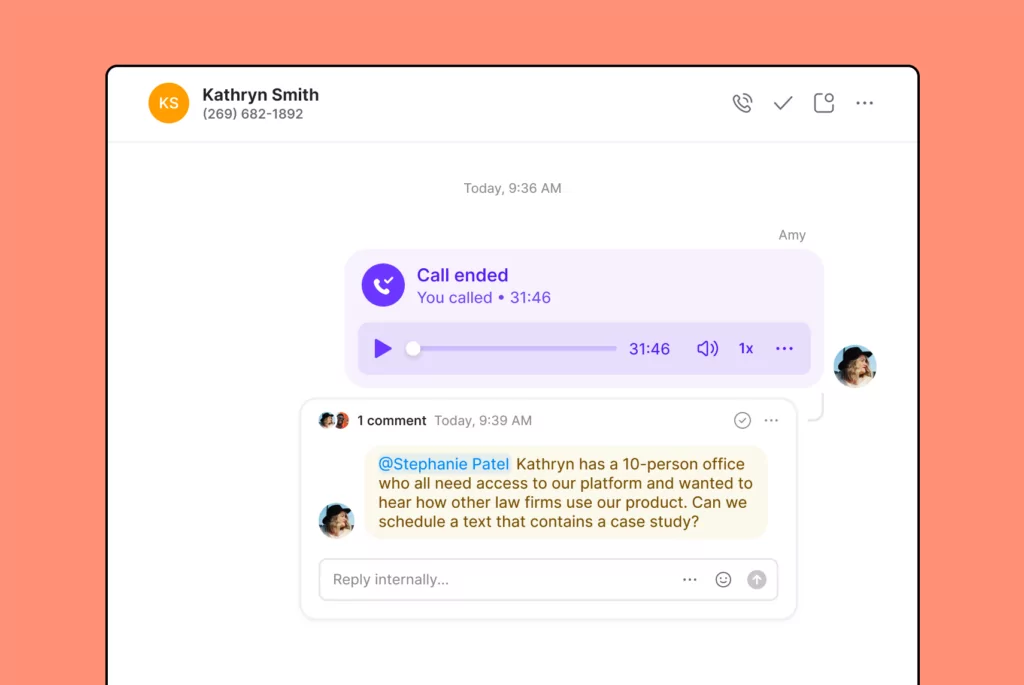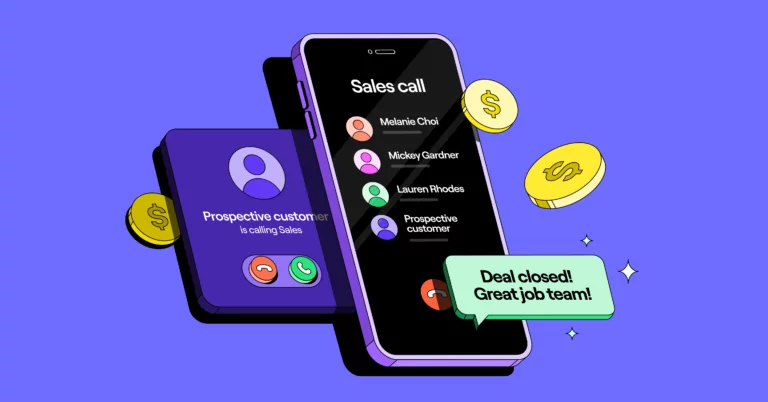BANT. MEDICC. You’ve likely come across these sales frameworks and perhaps even deployed these across your team. But there’s a big pitfall with them: they train the wrong behaviors out of your team.
This issue often comes up, particularly for junior reps where they go straight to terse questions like are you the decision maker? And what’s your timeline?
And if you’re looking to cultivate a more collaborative sales culture that starts with one thing: hiring the right profile.
Putting the right people in place for success
A sales professional, at their core, is a problem-solver, and solving problems doesn’t happen in a vacuum. The more we know, the more we can win.
At OpenPhone, we screen for individuals who are collaborative problem solvers during the interview process. We ask questions such as: What are you most proud of in your career? From there, we’ll drill down into more specific examples that show they don’t work in a silo: Give me an example of when you shared information with your team, and what was the outcome? We also try to understand how they think: Tell me about a time you used data to solve a problem.
My job is to set the expectation that the team wins together — and the best way to achieve that is through strong collaboration.
3 tentpoles of sales collaboration
Learning and sharing don’t always happen without intervention by leadership. Why? Because your reps will always cross off the next item on their to-do lists before they take a few moments to check in with a teammate.
But you can create collaborative processes. Once someone new is brought onto the team at OpenPhone, we foster collaboration through our culture, our incentives, and our approach to creative thinking.
1. Build a collaborative culture
When it comes to building a sales culture, a mentor of mine likes to compare it Teflon and Velcro.
Negativity is like Teflon. If you’re trying to train a team by showcasing things that aren’t going well, it will go over people’s heads. It won’t stick.
But if you focus training and enablement on the positives, it will be like Velcro and hold the team together. We have bi-weekly meetings around different themes. In these meetings, we ask people to share an example of something they’re really proud of. People can also bring deals they’re working on and we collectively coach one another.
In this vein, we also practice dynamic call coaching. Like a football team re-watches past games, we coach the team by jointly reviewing calls together. We dissect play-by-play to understand how we can always continue to improve.
In addition to internal resources, you could bring in outside talent that’s motivating or inspiring for your group. Any coaching reinforces the idea that you want individuals to win so the team can win. It’s an overall net positive, so it “sticks.”
2. Align incentives to team outcomes
I firmly believe that teams should be paid according to the team’s desired outcome. Instead of hitting individual targets, I want people to be monetarily incentivized to work together. For example, our CSM incentives are tied to overall team success because they work so closely with the new business team.
When you align incentives with outcomes, you’re encouraging thoughtfulness and accountability. Individuals will pay more attention to concrete next steps and demonstrating value rather than simply bringing in as many leads as possible and optimizing to short-sighted outcomes.
And sometimes, this means recalibrating our thinking and putting our efforts into the right accounts. And knowing when to walk away. An OKR that requires active touchpoints on 90% of accounts might be doing a disservice to CSMs because they could be wasting too much time on activities that don’t meet business goals.
3. Encourage creative thinking
I think a 4-year-old would make the best salesperson. 4-year-olds are endlessly curious, always asking questions and trying to learn. If sales individuals lead with curiosity and creative thinking, they can deeply understand their customers and propose solutions.
Collaboration lends itself to creative problem-solving, especially when it comes to closing deals. A sales rep might bring in another member of the team — even from another department — if it will help win business. We openly ask our team how we can do things better and differently.
Encourage innovation and creativity by asking your team how we can be better.Promoting creative problem solving goes back to building a collaborative culture and identifying those opportunities to creatively work within the team.
Put tools in place to enable collaboration
Having collaborative processes in place is a start. Having the right tools to facilitate collaboration takes you a step further. Tools can encourage process documentation, consistency across teams, and transparent communication.
At OpenPhone, we use the following:
Gong: We share snippets from sales calls during trainings, and share product wins and feedback during organization-wide meetings. This helps our sales team to refine our sales process but also shares the voice of the customer with our internal teams.
Slack: We have a dedicated channel where anyone at OpenPhone can ask the sales team questions. In another channel, we share insights from leads and customers along with the larger business phone market.
Notion: Our entire organization uses Notion to provide visibility and asynchronous collaboration on specific projects.

How our sales team tags other team members in OpenPhone.
OpenPhone: We have multiple shared inboxes so teammates can tag each other in internal threads and fill in for each other when someone is out of the office.
Salesforce: As far as collaboration, Salesforce ensures a smooth handoff between our product specialists and our customer onboarding manager for our larger customers.
Understand what works and what doesn’t
Our wins are fueled by collaboration, but we also have to understand why we’re winning — and also anything that might not be working. We tie our hypotheses to numbers and review the data monthly. If we make changes, are the results what we expected? That way, we’re completing a more objective review.
And to improve your sales results, you have to stay close to the ground. You need to understand the context that your team works in day in and day out. Observe, have conversations, and continue to find ways to encourage collaboration.
To learn more about our onboarding and sales tech stack at OpenPhone, check out this article.
